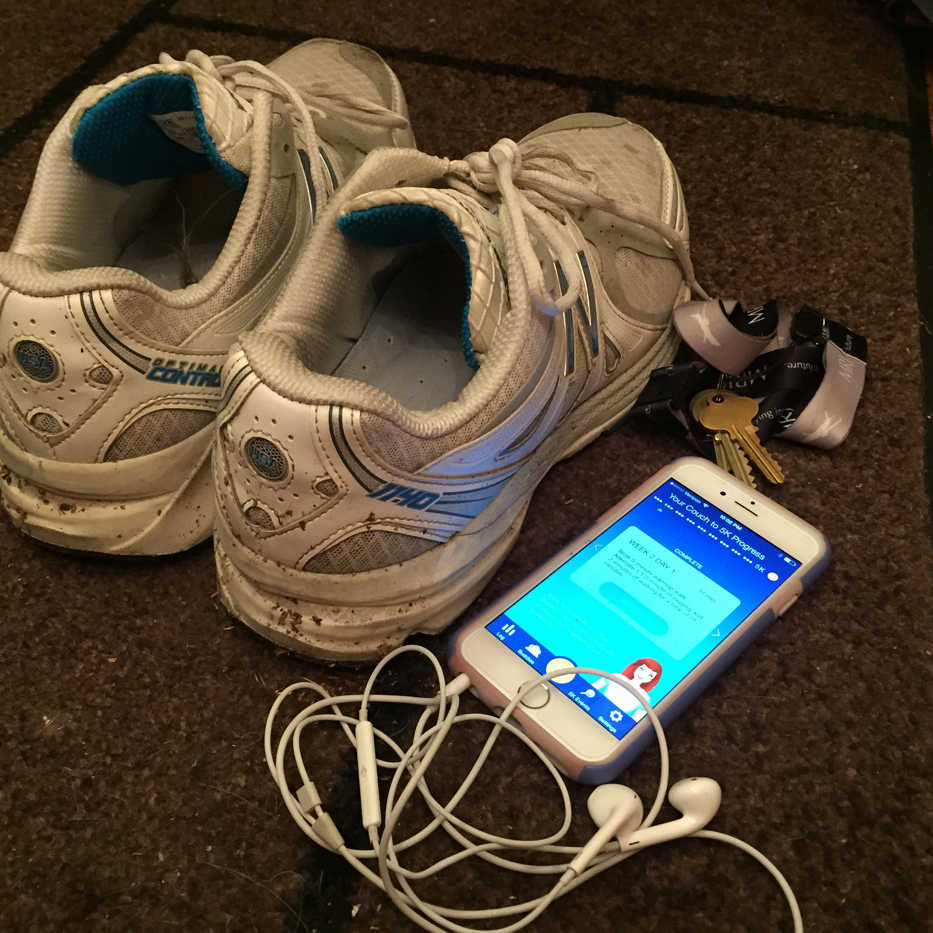NEW YORK — It’s the last five minutes of my 45-minute run. I’m panting. Sweating. Tuning out the occasional twinge of pain from a knee, calf or foot. Just focusing on the rhythm of my sneakers on the road.
I’m a 50-something baby boomer who’s never been to a gym or taken an exercise class. A few months ago, I decided to learn to run. I wanted to recapture that feeling of freedom and joy I remembered from childhood, when I could effortlessly dash across a park or run home without stopping to catch my breath.
But there seemed to be so many obstacles to taking up running in middle age: gear, time, weather, fear of injury, discomfort. Would I ever be able to do it for more than a few minutes without gasping?
Here’s how I learned to run.
I’m a boomer, but millennials are my gurus. If I’ve got a problem, they’ve got an app. A 20-something cousin told me about the Couch to 5K app. She said it made running painless by increasing your time and distance very gradually.
I downloaded the app to my phone for $2.99. It was easy to use. I clicked “Week 1 Day 1” and followed instructions: a five-minute warmup walk; then, for 20 minutes, alternating one minute of jogging with 90 seconds of walking; ending with a five-minute, cool-down walk. The app doesn’t give you any breaks based on age. But the intervals gradually increased over nine weeks until I was running 30 minutes straight. I checked out other running apps — there are many — but they seemed unnecessarily complicated.
Part of my learning curve was remembering to use my app’s lock key to prevent accidental swipes that paused, fast-forwarded or rewound the program as I ran. Another issue: Whenever the app bumped me up a notch — say from five to 10 minutes running, the increases at first seemed impossible. But each time, I upped my game.
At the end of the nine-week program, I was doing over 3 miles. I added more time and distance using the “free run” setting so the app’s log could keep tracking my data.
I’m still searching for the perfect music for my runs, switching between Spotify, Pandora and less well-known sites like Songza and Slacker Radio. I like listening to new songs, but some lyrics are too explicit for my middle-age sensibilities. Even so I refuse to make oldies playlists — though “Get Off of My Cloud” is the right tempo for my slow pace.
I didn’t want to buy new gear. But I needed weather-appropriate clothing and good sneakers — not the crummy, ancient ones I usually wear.
I dug out an unused pair of cross-trainers I’d bought at a New Balance tent sale long ago for $40. But after three months, my heel ached. I went to the running-gear retailer JackRabbit, where I’d also purchased a sports bra, and submitted to the store’s evaluation process: You run on a treadmill; they videotape you and recommend the right shoes. I splurged on a $150 pair with extra heel padding — three times more than I have ever paid for sneakers. The heel pain was nearly gone within two runs.
I also raided my teenage son’s closet. I wore tank tops and his basketball shorts until the weather changed; now I wear his jerseys, long pants, cap and windbreaker. The cold bothers me less than I’d imagined.
Between commuting, work and other commitments, 12-hour days are my norm. Finding time to run is hard.
Once a week, I run a 5K loop in my local park around 6 a.m. It’s dark when I start, but the park is well-lit, with enough joggers, bikers and even parents pushing strollers to feel safe. And the sky is awesome — planets and moon, then sunrise.
Once a week, I run at night on busy local streets. I’ve discovered a whole after-dark world out there: runners, dog-walkers, teenagers, cleaning crews, take-out delivery men, spooning couples, smokers and homeless people.
When I run the park weekends in the daytime, the sunshine feels luxurious.
Boomers accounted for 18 percent of New York marathon finishers this year. But only 10 percent of the 18.7 million people who completed all types of races in 2014 — from 5Ks to marathons — were 55 or older, according to Running USA, an organization that promotes the sport.
No wonder I’m older than most runners I see. When I do see gray-haired warriors, they pass me just as often as the millennials. But I’m less worried about speed than injury. A friend who started running with me at the end of the summer stopped after a few weeks due to aches and pains.
I watch videos and read all the advice and debates on warming up, stretches, treating soreness, preventing injury and running form.
All of it’s worth the trouble. I sleep better and feel more serene running. Call it runner’s high, dopamine, endorphins — troubles fly from my head with every step. Sometimes I can’t stop smiling.
I even ran my first race on Thanksgiving — a 5-mile Turkey Trot. My 55-minute time was nothing to brag about, but I placed in the middle of my age group. I was just pleased nothing hurt and that I still had plenty of energy when I was done.
It brought me back to that feeling I remembered from childhood: running with freedom and joy.

